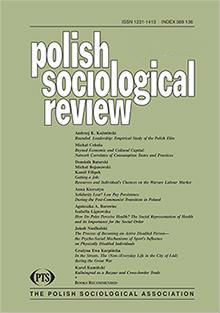Two Periods of the Peripheric Capitalist Development:Pre-Communist and Post-Communist Eastern Europe in Comparison
Two Periods of the Peripheric Capitalist Development:Pre-Communist and Post-Communist Eastern Europe in Comparison
Author(s): Zenonas NorkusSubject(s): Social Sciences
Published by: Polskie Towarzystwo Socjologiczne
Keywords: Eastern Europe; catching-up development; pre-communist; communist; post-communism
Summary/Abstract: In the long term perspective two post-communist decades in the Eastern Europe weremost recent attempt to close the economic development gap with the West after the communist “detour from the periphery to the periphery” (Iván Berend). The 1989 revolutions involved the restoration of capitalism and new integration into the capitalist world system. The paper compares the performance of post-communist capitalism in the reduction of the economic disparity with that of the pre-communist capitalism in 1913– 1938. For almost all countries covered by the long-time diachronic comparison, the periods of catching up alternated with those of falling behind. All Eastern European countries except Romania decreased during pre-communist period their GDP gap separating them from the capitalist world system hegemonic power (U.S.). The catching-up performance of post-communist countries widely varies: best performers during post-communist time performed better than the best performers in the 1913–1938 period, while the worst failures under post-communism performed worse than the weakest performers in 1913–1938.
Journal: Polish Sociological Review
- Issue Year: 190/2015
- Issue No: 2
- Page Range: 131-151
- Page Count: 20

